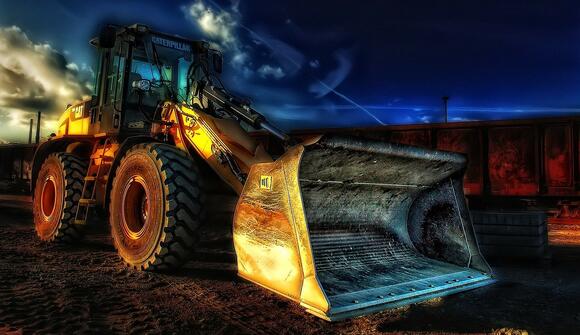
6 Companies That Could Fix Domestic Battery Supply Problem Using Little To No Emissions In The Mining of Essential Minerals
Previously Published to NewsBreak
SUMMARY:
- It’s said that a deficit in graphite and nickel could thwart EV production post-2022.
- Contrary to popular belief, North American companies already have the power to begin domestic battery production, mining and processing essential minerals on U.S. and Canadian soil.
- Genuinely ESG-friendly mining and mineral exploration companies are teaming up with heavy industrial equipment manufacturers to create all-electric mining and production equipment.
- Companies are creating 100% carbon-free, off-grid power sources that will enable cleaner mining and exploration practices for a truly emissions-free production cycle.
- Tesla is making a mistake applying for tariff-free imports from China, as opposed to accessing pure deposits just miles away.
When we talk about the essential elements of an electric vehicle (EV) battery, graphite, more times than not, seems to be left out of the conversation.
Recently, that all changed after news got out that there may be a global graphite deficit starting in 2022. This comes at a time when industry movers and shakers are preparing for a massive EV boom, and demand from the battery sector is expected to rise by 30% annually until 2030.
And actually, the demand for domestic battery products may all be in vain unless something is done, otherwise, to save it.
While making the point that China controls 84% of the global supply of graphite on this planet, a contributor at Yahoo! Finance makes claims that there are no domestic manufacturing plants in the U.S. to supply automotive-grade graphite at scale. Because graphite isn’t battery-ready straight out of the ground, it must be processed.
While synthetic graphite production is possible, it’s nowhere near as affordable or environmentally-friendly as the original. Hence, a broken supply chain that must first be fixed in order for the global energy transition that Goldman Sachs has dubbed the “great battery race” to continue and for total electrification to thrive.
WWR and NMG Could Change the Game for Graphite in Domestic Battery Production
Graphite is a key element that forms the anode of lithium batteries. Without it, a trillion-dollar EV market ceases to exist. Without it, there’s no EV revolution, no carbon-free future and no reason to go “all-in” on EV.
And while the supply chain has already been disrupted and companies are forging exclusive partnerships with producers overseas, this may simply not be true. In fact, three companies come to mind that negate this fact, and they’ve just been waiting for their time to shine.
One company is Westwater Resources Inc. (NYSE: WWR), an explorer and developer of US-based mineral resources essential to clean energy production – including graphite. In 2018, the company purchased Alabama Graphite in order to expand its minerals list before going full-force into its new graphite production company in 2020 with the sale of its uranium assets in Texas and New Mexico to the enCore Energy Corp. (TSX.V: EU).
The Coosa Graphite Project is known as one of “the most advanced graphite projects in the contiguous United States of America.” This year, Westwater Resources shared its plans to invest $202 million in order to develop a “one-of-a-kind” production facility that would allow the company to process graphite at a mass scale.
By early 2023, the facility is expected to begin processing an estimated 8,050 metric tons of graphite concentrate per year. The company also anticipates raw material to be supplied from outside sources until at least 2028.
While there’s speculation that the global graphite market is extremely undervalued, in 2019, the entire market was said to be valued at $14.9 billion. And it’s expected to be valued at around $22 billion by 2027. But with countries adopting an all-electric future, it is likely to far exceed even that.
According to Yahoo! Finance, “The average HEV needs up to 10 kgs of graphite. The average EV requires up to 70 kgs. A Tesla Model S needs even more. Every million EVs require around 75,000 tonnes of natural graphite.”
Batteries contain almost 30% graphite – a third of the most essential materials included in an EV battery. When the demand for EVs begins soaring out of control, so will the demand and price for graphite, and we need to be prepared.
North of the U.S., Canada’s Nouveau Monde Graphite Inc. (NYSE: NMG) (TSXV: NOU) is making major waves in not just graphite but the mining industry in general. A battery materials company, based out of Québec, Canada, Nouveau Monde believes that with a higher set of standards and a stronger emphasis on accountability, it’s possible to eliminate harmful emissions from the mining process and to ensure that battery production supports not only green energy but also safeguards human rights while promoting health and environmental sustainability.
The company was founded with the tenacity to fight centuries-old sentiment that mining companies are terrible for the environment.
As part of the Global Battery Alliance, Nouveau Monde has built a strong reputation for upholding strict ESG standards, its due diligence in the field, and self-accountability. It joins others within the organization to promote sustainability and accountability across the entire battery materials value chain.
“Battery minerals cannot power a sustainable energy revolution unless their extraction and value-added transformation are done on a zero-harm basis,” said Arne H. Frandsen, Chairman of Nouveau Monde. “We aim at being a catalyst for growth and shared value for people and the environment in which we live. We, as a team, develop what’s projected to be North America’s largest anode-quality natural graphite operation, supporting the electrification of mobility as well as the renewable energy storage markets.”
In August 2021, the company joined other battery manufacturers, automakers, technology companies, governments, and international organizations as a thought leader and one of the first battery materials producers in the alliance. They want to be part of the solution, working tirelessly to build alliances in the name of a decarbonized economy and more dependable mining activities.
Other members of the include the Global Battery Alliance (GBA) include the Alliance for Responsible Mining (ARM), BMW Group (OTCMKTS: BMWYY), LG Chem (KRX: 051910), Microsoft (NASDAQ: MSFT), SK Innovation (KRX: 096770), Umicore (OTCMKTS: UMICY), UN Environment (UNEP), Volkswagen Group (OTCMKTS: VWAGY), Volvo Group (OTCMKTS: VLVLY), Google (NASDAQ: GOOGL), Renault (OTCMKTS: RNLSY), Honda Motor Co (NYSE: HMC), Infrastructure and Energy Alternatives Inc. (NASDAQ: IEA), Johnson Matthey (OTCMKTS: JMPLY) and the World Bank Group.
Through this globally-backed organization, companies work to develop a more responsible, traceable and efficient battery ecosystem and low-carbon economy.
In August 2021, Nouveau Monde received its own CAD$4.25 million grant to build a graphite purification processing plant from the federally funded Sustainable Development Technology Canada program. An article by Mining.com reported that this plant is currently in phase 1 and fully capable of producing spherical graphite products that contain less than 500 ppm of impurities.
And What About the Other Elements in EV Battery Production?
Processed graphite, either natural or synthetic, makes up more than 95% of the anode in lithium-ion batteries. Positive electrodes, otherwise known as cathodes, however, tend to be comprised, more or less, of nickel and cobalt.
Nickel makes up as much as 80% of the material that goes into EV batteries. So, it’s no wonder that the U.S. recently added nickel and zinc to its critical minerals list, deeming it essential to the future of the U.S. economy, global technologies and the companies that use such minerals for production.
Pure nickel, in its own right, has also been listed as scarce. While it’s the fifth most common element on earth and occurs extensively in the earth’s crust and core, nickel is rarely found by itself in nature, and it’s becoming harder and harder to come by.
Driven partially by the Covid-19 vaccine, according to the International Nickel Study Group (INSG), global nickel demand is expected to rise to 2.8 million tonnes this year and to 3 million tonnes in the next, “resulting in a projected nickel deficit of 134,000 tonnes in 2021 and a surplus of 76,000 tonnes in 2022.” The group also warned of disruptions in production in places like China and Indonesia.
According to the USGS, “The United States relies on refined nickel imports for around half of its annual consumption.” In fact, the top three nickel suppliers in 2020 were Canada, which provided 42% of the total supply, Norway at 10% and Finland at 9%.
Because of a broken supply chain in North America, battery-grade nickel is in high demand due to its unique ability to power lithium-ion batteries in EVs, and any tariffs or restrictions placed on such materials would pose a serious supply chain risk for global battery manufacturing.
In December, Tesla (NASDAQ: TSLA) requested a tariff waiver for graphite and other imported materials from China, as essential to its EV battery production and vehicle lines. But, little did they know, they didn’t have too far to go. Nouveau Monde itself is said to be using a much greener, hydro-electrification process than the chemical-laden process used in China, where most of the world’s spherical graphite is produced and exported.
In the U.S., pure nickel is hard to come by. But in Canada, this is a different story.
Near the Tesla Gigafactory 1, a lithium-ion battery and electric vehicle component factory in Storey County, Nevada (USA), there’s a Canadian-based mineral exploration company that provides just that.
In addition to lithium and copper, Surge Battery Metals Inc. (TSXV: NILI)(OTCQB: NILIF)(FRA: DJ5C) has been paving the way for domestic EV battery production. This company has secured the land and licensing for various mineral-rich deposits in mining-friendly jurisdictions.
In every project the company undertakes, Surge Battery Metals takes the necessary steps to cut back on carbon-heavy, greenhouse gas emissions at all stages of production – from underground ore mining to processing and refining.
The company currently has six different exploration sites under its belt, partnering with leading mining companies in each region.
A report by Surge Battery Metals claims that “EV manufacturers are calling for more supply of nickel because nickel quantities are increasing in batteries, as they increase the amount of charge a battery can hold, thus allowing the EV’s to travel greater distances.”
It continues that “one such company is Tesla Inc. (NASDAQ: TSLA), the world’s leading EV manufacturer. Tesla’s production target is 20 mill cars by 2030, and Tesla’s Founder, Elon Musk, stated that a large contract would be signed if a company could produce nickel with a lowered carbon footprint by using more environmentally-friendly ways of mining,” citing an article by Reuters on September 11, 2020.
With Canada to the north and Surge Battery Materials just a few miles around the corner, Tesla would be saving a whole lot more time and quite a few more dollars, securing these materials from home.
Caterpillar and Greenland Technologies for Zero-Emissions Mining
Through this same sentiment, Nouveau Monde has teamed up with Caterpillar Inc. (NYSE: CAT) to design the world’s first all-electric mine in Metawine, Canada.
Nouveau Monde told Benzinga that “the end goal is to create an effective, fully integrated operation, from ore to the battery, powered by clean hydropower as the company rallies its partners and seizes opportunities to decarbonize heavy industry — creating opportunities and developing projects like the Matawinie graphite mine, which is expected to become the largest high-purity graphite producer in the Western World, and the Bécancour battery materials plant, where Nouveau Monde is creating, according to its tagline, “green battery materials to power the energy rEVolution.”
By developing a 100% electric mine, a world-first for open-pit mining, using renewable hydroelectricity, the company projects an 85% reduction in greenhouse gas (GHG) emissions.
According to the company, Caterpillar will develop, test and produce Cat® “zero-emission machines” for Nouveau Monde’s Matawinie graphite mine by 2028, providing the company with an entire fleet of electric-powered vehicles and excavators – allowing Nouveau Monde to mine for graphite responsibly.
While Caterpillar is providing Nouveau Monde with the essential vehicles it needs to carry out this mission, it’s not quite clear if the company plans to make this machinery available to others outside of the organization or if they will become commercially available.
In the meantime, the Greenland Technologies Holding Corp. (NASDAQ: GTEC) has already become the first company to create and sell heavy, industrial equipment, including lithium-powered forklifts, excavators and front loaders, directly to consumers and for commercial production.
The company has collaborated within several market sectors to understand the direct needs of each market with the ultimate goal of pioneering change in the electrification of industries traditionally dominated by heavy-emission internal-combustion systems.
Greenland Technologies is a developer and manufacturer of drivetrain systems for materials handling, industrial machinery, electric vehicles (EVs) and electric industrial vehicles – and could prove a godsend to the mining industry in general, should mines begin adopting the technologies the company already has to offer.
Off-Grid Electrification Adds Additional Leverage to Heavy Mining Operations
In addition to electric industrial powered vehicles, a company called Worksport Ltd. (NASDAQ: WKSP) (NASDAQ: WKSPW) and its wholly-owned subsidiary, Terravis Energy, will be providing additional electrification that will enable mining operations to take place entirely off-grid and without the need of existing power lines or cables.
Worksport is a global leader in tonneau covers and accessories for pickup trucks. In the last few years, they have been working diligently to develop solar and hydrogen-powered energy storage solutions and are said to be releasing those products later this spring.
Products include a solar-powered tonneau that can power an entire electric truck, camper or RV (which will come in handy in rocky terrains and places where miners are expected to stay on-site for more than a few days in a row). It can also be used on a gas-powered vehicle to power a separate COR battery unit which is also able to power various electric vehicles, job sites and emergency response equipment.
In addition to their SOLIS and COR products, Worksport will also be launching its non-parasitic EV chargers later this year. These stand-alone, fast-charge units will fully charge an EV in less than 2 hours and are totally grid-free and 100% carbon neutral – which can mean everything to a remote mining operation that decides to use a fully-electric industrial vehicle. Likewise, solar covers and battery units can be used for power tools, lighting rigs and even communications.
Forward-Thinking
A conservative average, the International Energy Agency (IEA) reported back in September that both electric mobility and low-carbon energy sectors could see a demand of more than 25 times more graphite year-over-year through 2040 than we see today.
By 2030, more than 145 million electric cars, buses, vans and freightliners expect to hit the public roadways. Not included in this mix is the multi-billion-dollar electric UTV industry, which is now considered one of the fastest-growing EV sectors globally – estimated by Yahoo! Finance to grow to $9 billion by 2025, while the entire electric vehicle market reaches more than $396.9 billion by 2028.
The Intergovernmental Panel on Climate Change (IPCC) desperately called for stronger protections against climate change and for the environment, alerting the world of an incoming “code red for humanity.” This comes at a time when the forsaken concept of NIMBY (“not in my back yard”) exists, making it harder and harder to control a global climate, let alone the market.
Emissions are dropping – but they’re still high. The supply chain is faltering. And, pseudo-ESGs are beginning to leave a bad taste in investors’ mouths.
Going forward, it will be about fulfilling demand, producing batteries domestically, setting standards and leading by example. Society may be entering a long energy transition period, with many organizations lacking the means to immediately “go green.”
However, the chicken-and-egg situation becomes a lot clearer through companies such as Worksport, Greenland Technologies, Caterpillar, and the above mining companies.
To that effect, the mining and metals industry plays a significant role in the global energy transition. The commodities it mines, such as lithium, nickel, cobalt, and graphite, are necessary for ushering in a clean energy future, requiring that it seize the opportunity to deliver on the transition to clean energy.
We need to start somewhere. Let’s start in our backyard. Let’s combine what we know works. And beginning building greener in the new year!
DISCLAIMER: The author of this article holds stock in one or more of the above companies mentioned above and regularly does her due diligence to understand each of those companies, the markets they serve, their impact on the environment and their individual competitive landscapes. This article is meant to inform and educate. It does not and should not constitute as financial advice, as the author believes it is ultimately up to the reader to conduct his or her own analysis before making any investment into any company either now or later.



